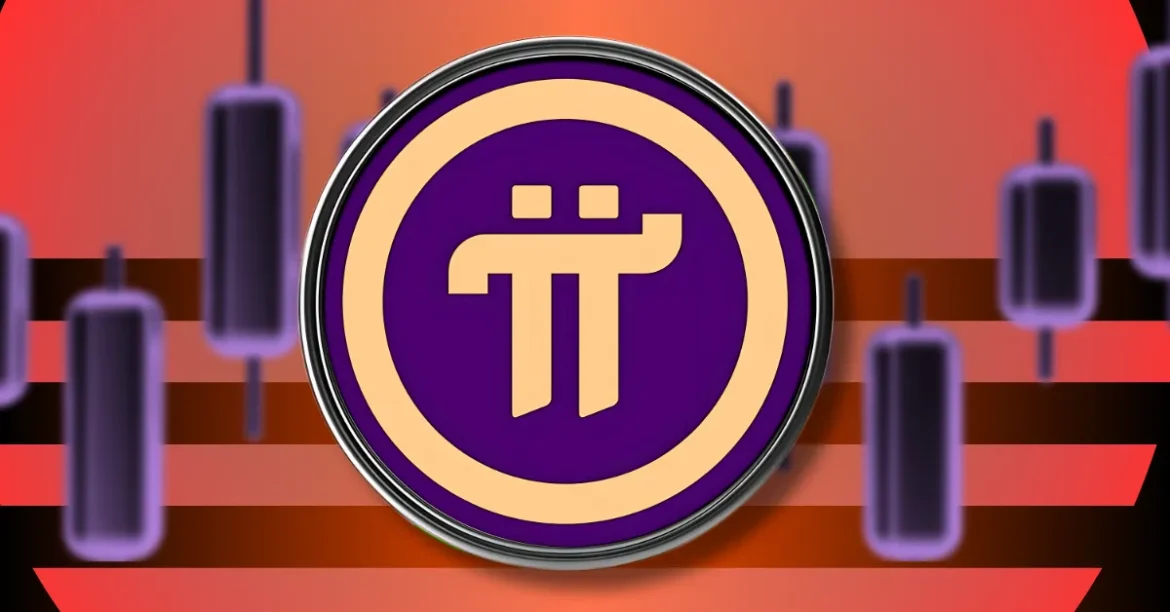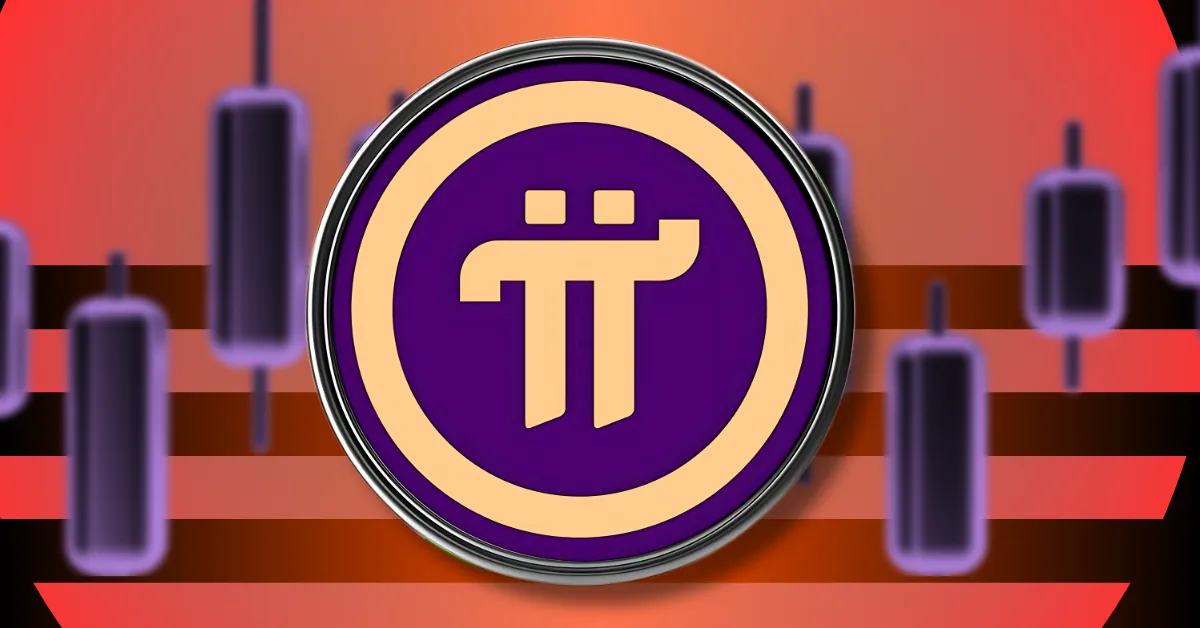Pi Network has emerged as a distinctive player in the cryptocurrency landscape, capturing the imagination of millions with its smartphone-based mining model. Launched in 2019, the project has grown rapidly, attracting users who appreciate its accessibility and environmental friendliness. Unlike traditional cryptocurrencies like Bitcoin, which require substantial computational resources for mining, Pi Network allows users to mine Pi coins directly from their mobile devices. This innovative approach has sparked both enthusiasm and skepticism, as the project navigates the complexities of market dynamics, regulatory compliance, and technological development.
As of July 9, 2025, the price of Pi stands at approximately $0.46 USD, reflecting a relatively stable valuation despite minor fluctuations across different exchanges. The price range typically falls between $0.45 and $0.47 USD, with variations likely stemming from differences in data aggregation methods and trading volumes. The market capitalization of Pi Network is estimated at around $3.5 billion USD, a figure that underscores its substantial, albeit theoretical, market presence. However, it is essential to note that this market cap is based on the total supply of Pi coins, with the actual circulating supply and transactional capabilities still limited due to the network’s enclosed mainnet phase.
The 24-hour trading volume for Pi varies significantly, ranging from $4 million to $60 million USD, depending on the reporting source. This variability highlights the challenges in accurately assessing Pi’s market activity, as trading primarily occurs on IOU (I Owe You) markets or within limited exchange environments. The discrepancies in trading volume and price data underscore the need for greater transparency and standardization in the reporting of Pi Network’s market metrics.
Several factors influence the price of Pi Network, with speculative demand being the primary driver. Many users and investors are drawn to Pi Network based on the belief that it has the potential to become a widely adopted cryptocurrency. This anticipation of future utility and value fuels the current valuation. Additionally, the size and engagement of the Pi Network community play a crucial role in shaping its market dynamics. A larger and more active user base can enhance the network’s potential for growth and adoption, thereby positively impacting its price.
The progress of Pi Network’s development, particularly the transition to an open mainnet, is another significant factor influencing investor sentiment. Positive developments, such as the launch of new features and strategic partnerships, can boost confidence and drive up the price. Conversely, delays or setbacks in development can lead to skepticism and downward pressure on the price. Furthermore, general market sentiment towards cryptocurrencies as a whole can affect Pi’s valuation. A bullish market environment can lift Pi’s price, while a bearish market can exert downward pressure.
Pi Network currently operates within an enclosed mainnet, a controlled environment where transactions are limited to KYC-verified users and specific applications within the Pi ecosystem. This approach offers several advantages, including a controlled environment for testing and development, KYC compliance, and the facilitation of ecosystem development. However, it also presents challenges, such as limited liquidity, centralization concerns, and price discrepancies across different markets.
The enclosed mainnet allows the Pi Network core team to maintain a controlled environment for testing and development. This helps to identify and address potential issues before opening the network to the public. Additionally, requiring KYC verification helps to prevent fraud and ensure regulatory compliance, building trust within the ecosystem. The enclosed mainnet also facilitates the development of Pi-based applications and utilities, fostering a vibrant ecosystem ahead of the open mainnet launch.
However, the restricted trading environment limits the liquidity of Pi coins, as users cannot freely buy, sell, or trade Pi on major cryptocurrency exchanges. This hinders price discovery and potentially suppresses the value of Pi. The centralized nature of the enclosed mainnet raises concerns about control and transparency, with some critics arguing that the Pi Network core team has too much power over the network. Furthermore, the lack of open trading leads to price discrepancies between different IOU markets and internal Pi marketplaces, making it difficult to establish a fair and accurate market value.
Pi Network’s mobile-based mining system is a key differentiator, allowing users to earn Pi coins simply by checking into the app daily. This approach has democratized cryptocurrency participation, making it accessible to individuals who lack the resources for traditional mining. The ease of mining Pi has contributed to its rapid user growth, but it has also raised questions about the intrinsic value of Pi. Critics argue that the abundance of Pi coins could dilute their value over time. To address this, the Pi Network core team aims to halve the mining rate as the network grows and implement mechanisms to burn Pi coins.
The future of Pi Network hinges on its ability to successfully transition to an open mainnet and build a thriving ecosystem of applications and utilities. The transition to an open mainnet is crucial for Pi Network’s long-term success, as it will enable free trading and exchange of Pi coins, facilitating price discovery and increasing liquidity. The timing and execution of this transition will be critical to the project’s success.
The development of useful and engaging applications within the Pi ecosystem is essential to driving demand for Pi coins. This includes e-commerce platforms, social networks, and other utilities that leverage Pi as a medium of exchange. A robust ecosystem will not only enhance the utility of Pi but also attract more users and investors to the network.
Navigating the complex and evolving regulatory landscape for cryptocurrencies is another significant challenge for Pi Network. The project must ensure compliance with applicable laws and regulations in various jurisdictions to avoid legal and financial risks. This requires a proactive approach to regulatory engagement and a commitment to transparency and accountability.
Pi Network faces competition from other cryptocurrencies and blockchain platforms, each vying for market share and user adoption. To succeed, Pi Network must differentiate itself through its unique value proposition and execution. This includes leveraging its large user base, innovative mining mechanism, and ecosystem development to create a compelling offering that stands out in the crowded cryptocurrency market.
As the network grows, Pi Network must ensure that its infrastructure can handle the increasing transaction volume. Scalability is essential for maintaining a smooth and efficient user experience, and the project must invest in robust technological solutions to support its growth.
In conclusion, Pi Network presents a compelling vision of a decentralized and accessible cryptocurrency. Its innovative mining mechanism and large user base give it the potential to disrupt the traditional cryptocurrency landscape. However, the project also faces significant challenges, including the need to transition to an open mainnet, develop a thriving ecosystem, and navigate regulatory hurdles. Ultimately, the success of Pi Network will depend on its ability to deliver on its promises and overcome these challenges. Whether it becomes a revolutionary force in the world of digital finance or fades into obscurity remains to be seen, but its journey is undoubtedly one worth watching.





